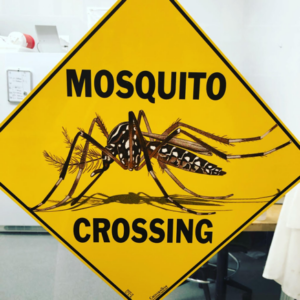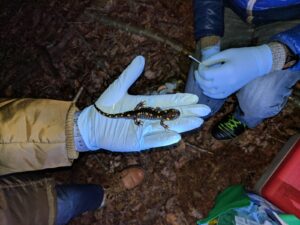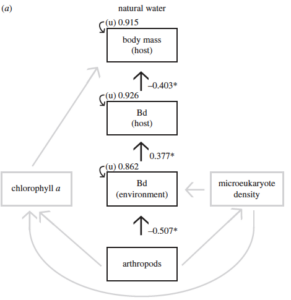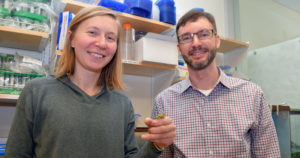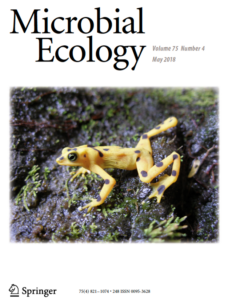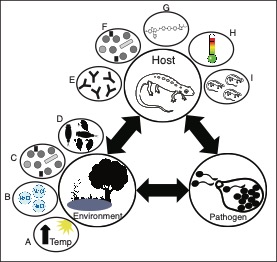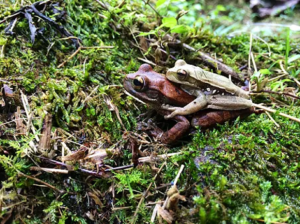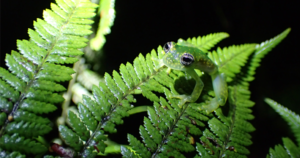
Dr. Joe Madison (left) and Dr. Woodhams (right).
Dr. Joe Madison was awarded the prestigious NSF Postdoctoral Research Fellowship to join the Woodhams Lab, researching host-microbiome ecology. Joe’s project will test the hypothesis that microbial gut communities significantly vary in diversity and function both within and between amphibian assemblages over spatiotemporal gradients. This hypothesis will be tested by utilizing museum specimens and their associated land-use and land-cover (LULC) data from the Midwest and Northeast United States from the 1880s to present. Recently developed techniques for degraded DNA isolation, shotgun metagenomic sequencing, and bioinformatic machine-learning software will also be leveraged in the completion of this work.

